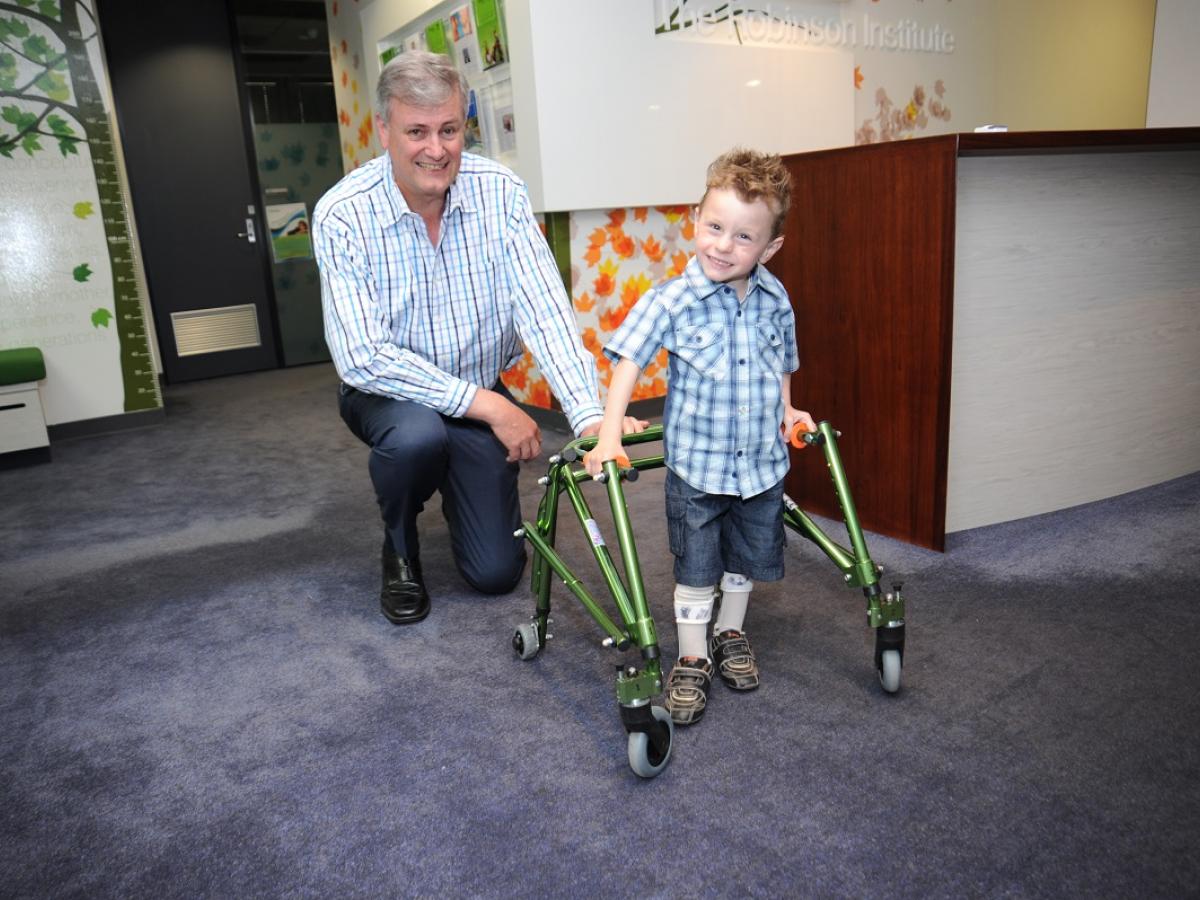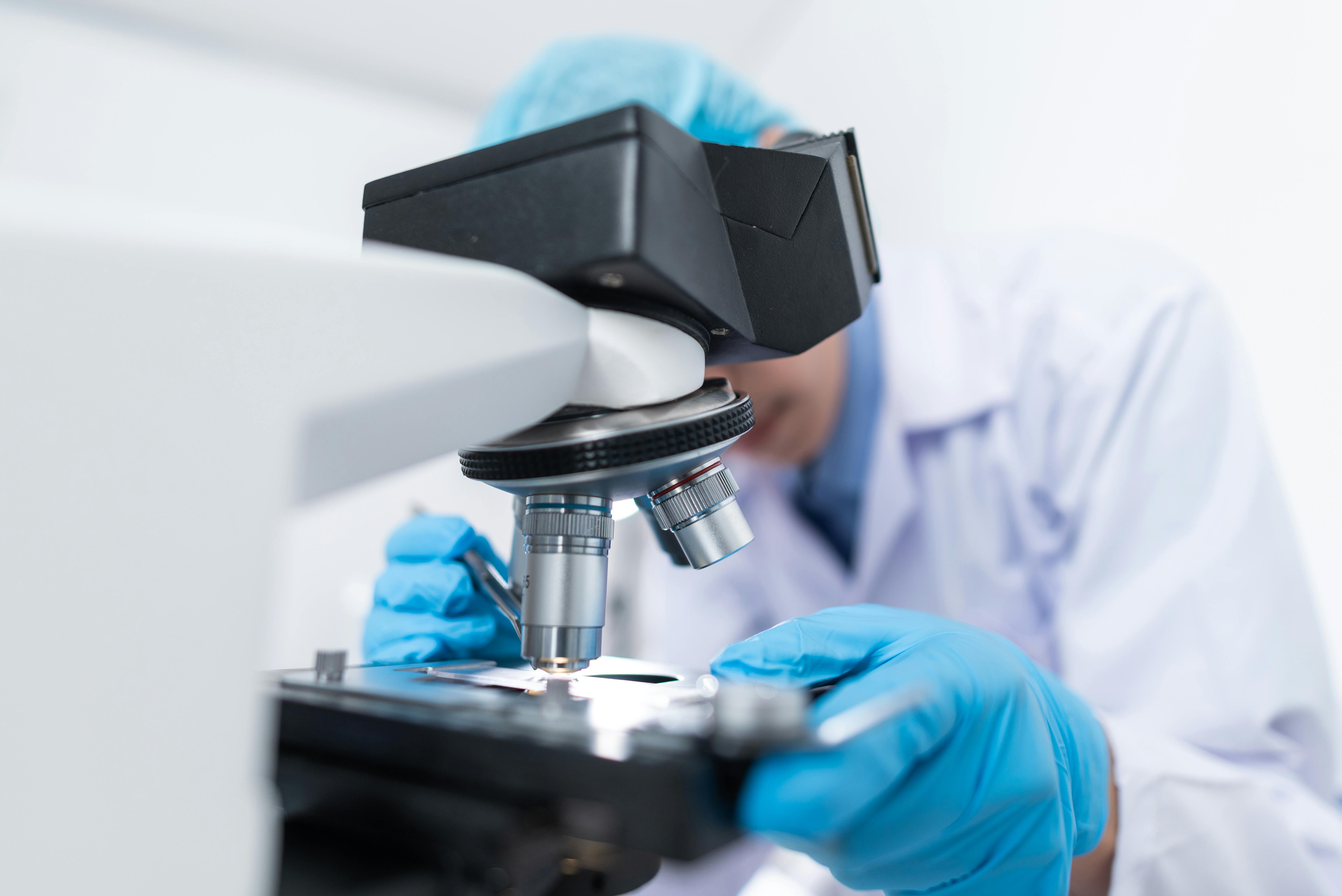
Professor Alastair MacLennan and Mathew Reinerstein who has cerebral palsy and is an ambassador for the Australian Cerebral Palsy Research Group in 2012.
The world’s largest study of cerebral palsy (CP) genetics has discovered genetic defects are most likely responsible for more than a quarter of cases in Chinese children, rather than a lack of oxygen at birth as previously thought.
The study, published in the prestigious scientific journal, Nature Medicine, used modern genomic sequencing and found mutations were significantly higher in CP cases with birth asphyxia, indicating a lack of oxygen could be secondary to the underlying genetic defect. The results are consistent with smaller studies globally.
More than 1,500 Chinese children with CP were involved in this research project, which was a collaborative effort between the University of Adelaide and Fudan University Shanghai, Zhengzhou University, Zhengzhou and associates.
The Australian team was led by obstetrician and University of Adelaide’s Emeritus Professor Alastair MacLennan AO and human geneticist, Professor Jozef Gecz.
“24.5 per cent of Chinese children in the study had rare genetic variations linked to cerebral palsy. This revelation mirrors our earlier findings in our Australian cerebral palsy cohort, where up to one third of cases have genetic causes,” said Professor Gecz, who is the University of Adelaide’s Head of Neurogenetics at the Adelaide Medical School and the Robinson Research Institute.
“Our research shows at least some babies who experience birth asphyxia and are diagnosed with CP may have improper brain development as a result of the underlying genetic variants rather than a lack of oxygen.
“Crucially, clinically actionable treatments were found in 8.5 per cent of cases with a genetic cause. It is exciting to see how genetic pathways to cerebral palsy inform tailored treatments for these individuals.”
“These results highlight the need for early genetic testing in children with cerebral palsy, especially those with risk factors like birth asphyxia, to ensure they receive the right medical care and treatment.” University of Adelaide’s Emeritus Professor Alastair MacLennan AO
Cerebral palsy affects movement and posture and is the most common motor disability in children. The disorder is diagnosed in up to 2 per 1000 children globally and is sometimes in association with epilepsy, autism and intellectual difficulties. Symptoms often emerge during infancy and early childhood and can range from mild to severe.
The research team identified 81 genes with causation mutations in the children with CP. These genes are known to play important roles in neural and embryonic development and may affect the molecular pathways responsible for respiration.
“A lack of oxygen at birth is often claimed to be the cause of CP in medical litigation following a diagnosis and this has led to the presumption that the condition is preventable with better obstetrics or midwifery. This is simply not the case,” said Professor MacLennan, who has spent the past 30 years advocating that there is little scientific evidence to support the myth that cerebral palsy is due to trauma or lack of oxygen at birth.
Professor MacLennan said frequent litigation has been associated with a high increase in “defensive” caesarean delivery and high insurance premiums for obstetricians.
“These results highlight the need for early genetic testing in children with cerebral palsy, especially those with risk factors like birth asphyxia, to ensure they receive the right medical care and treatment.
“All children with cerebral palsy merit modern genetic screening as early and customised interventions really can make a difference and improve their long-term outcomes,” he said.
Ongoing genetic research is also investigating other types of contributing genetic variation to the cause of CP and, as a result, the researchers expect that the overall genetic diagnosis rate is likely to increase.








